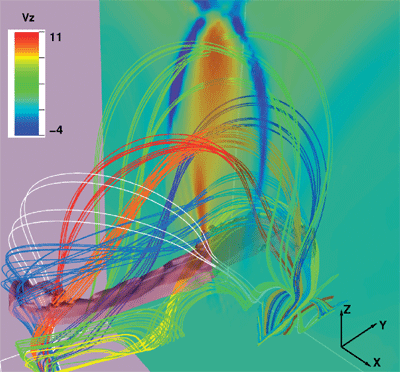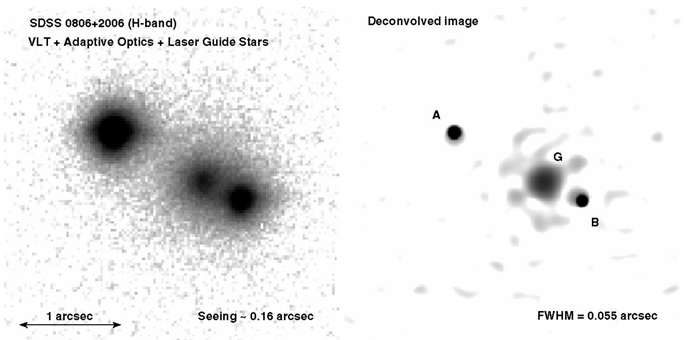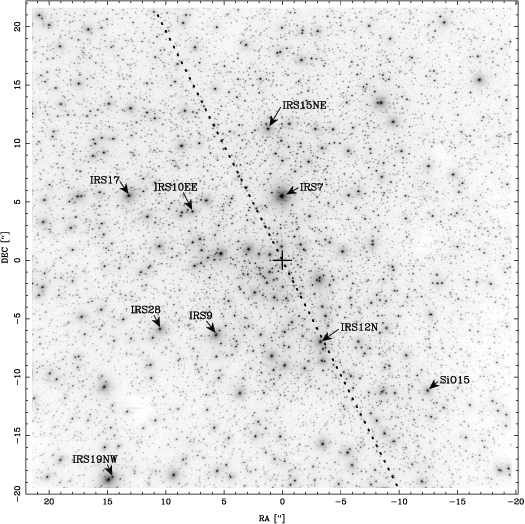Highlights - Volume 492-2 (December III 2008)
- Details
- Published on 02 December 2008
| HIGHLIGHTS: this week in A&A |
Volume 492-2 (December III 2008)
| In section 1. Letters “Eruption of magnetic flux ropes during flux emergence”, by V. Archontis and T.Török, A&A 492, p. L35 This paper describes a numerical experiment investigating the rise of a twisted flux tube from the solar interior all the way into the corona. Depending on the coronal magnetic field configuration, it might even rise farther forming a coronal mass ejection. For the fist time this study shows the interplay of the emergence of magnetic flux through the surface, reconnection in the corona, and the eruption of solar material into interplanetary space. |
|
| In section 1. Letters “A sharp look at the gravitationally lensed quasar SDSS J0806+2006 with laser guide star adaptive optics at the VLT”, by D. Sluse, F. Courbin, A. Eigenbrod, and G. Meylan, A&A 492, p. L39 This paper reports the first VLT near-IR observations of a gravitationally-lensed quasar, using adaptive optics and laser guide stars. With only 14 minutes of observing time, the authors derive very accurate (within 0.05 arcsec) astrometry of the quasar images and of the lensing galaxy, comparable to what is obtained with the Hubble Space Telescope. This allows them to constrain models for the mass distribution in the lensing galaxy. |
|
| In section 5. Galactic structure, stellar clusters and populations “Kinematics of the old stellar population at the Galactic centre”, by S. Trippe et al., A&A 492, p. 419 The authors present much improved kinematic information on the central cluster of our Galaxy, from adaptive-optics-assisted astrometry and spectroscopy. Modeling of those new data allows them to derive an improved distance to the galactic center and to demonstrate that the central cluster is described as uniform, isotropic, rotating, dynamically relaxed, and a phase-mixed system. |
|
| In section 6. Interstellar and circumstellar matter “Time evolution of the line emission from the inner circumstellar ring of SN 1987A and its hot spots”, by P. Gröningsson et al., A&A 492, p. 481 SN1987A is a dramatically evolving SNR that shows emission that varies on timescales of about a year. Repeated observations are therefore essential. In this issue, Gröningsson et al. present high-resolution spectra from 1999 until 2007. The authors are able to separate the shocked and unshocked emission from the equatorial ring. They argue that radiative shock models agree with the observations and show that the shocks could be among the highest velocity radiative shocks ever observed. |
© Astronomy & Astrophysics 2008




